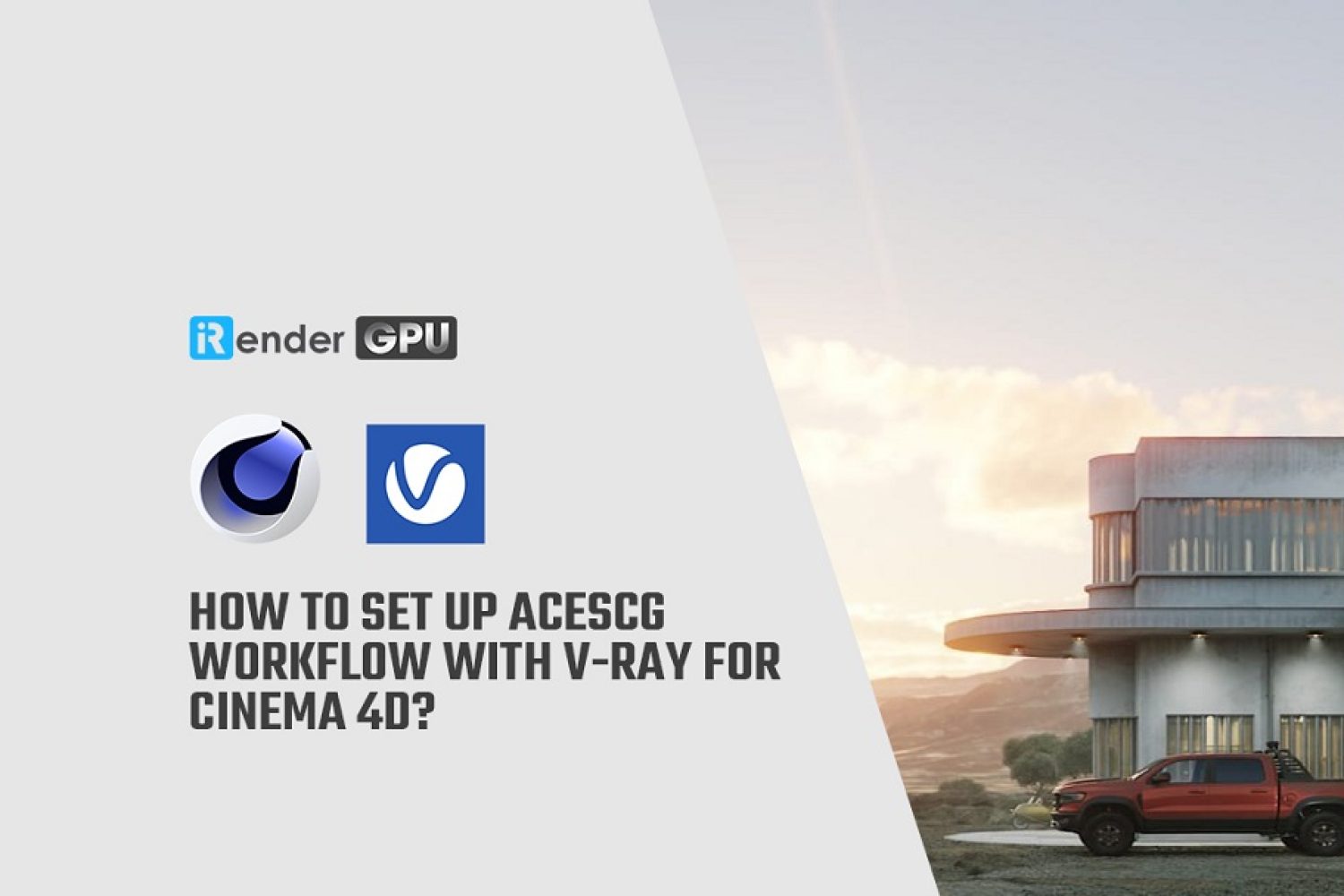Octane, known as one of the leading GPU rendering engines in the industry, has achieved widespread recognition for its exceptional performance. As artists seek out the ideal GPU for Octane, a frequently asked question is “Are OpenCL compatible cards (AMD and Intel GPUs) supported?” Surprisingly, Otoy’s response to this question is “Not yet.” This prompts us to delve deeper into understanding how Octane supports GPUs from both NVIDIA and AMD and what implications this has on users seeking optimal performance.
Exploring New Updates in Redshift 3.6 with iRender
Good news for the 3D artist community, Maxon has released Redshift 3.6, the latest version of its production renderer. This is a major update, adding a new non-photorealistic rendering system, overhauling volume rendering and area lighting, and introducing official support for rendering on AMD GPUs. This new updated version will help users get the best experience for their complex projects.
How to set up ACEScg workflow with V-Ray for Cinema 4D?
V-Ray for Cinema 4D is one of the best rendering plugins with many high-end and industrial-quality features. Chaos, with a long time in the industry, always provides the best for its render engine. From V-Ray 5 and now V-Ray 6 for Cinema 4D, they come with an implementation of the ACEScg – the version of the ACES encoding system for computer graphics, now has become industry standard. In the article, let’s see how to set up ACEScg workflow with V-Ray for Cinema 4D with iRender.
Choosing AMD GPUs for Redshift: All things you need to know
Redshift, a powerful GPU-accelerated rendering engine, has gained significant popularity in the world of 3D rendering and visual effects. While NVIDIA GPUs have traditionally dominated the rendering landscape, Redshift has made strides in extending its support to include AMD GPUs as well. So, should we choose AMD GPUs for Redshift rendering? Let this article answer you.
The Difference Between Arnold Renderer and V-Ray
Nowadays, many people use 3D software to create their VFX works. Using a render engine is extremely essential and is becoming more and more popular. Depending on the specific project, artists will balance and choose the most suitable render engine for the project. The principle of these renderers is basically the same, but the method of operation is somewhat different.
So, in this blog today, let’s learn the difference between Arnold Renderer and V-Ray with iRender!
Identifying different types of noise in Arnold
Arnold is an advanced Monte Carlo ray tracing renderer for many DCC application such as Maya, Cinema 4D, Houdini, 3ds Max, Katana, etc. It’s often used for feature-length CGI animation and big-budget visual effects because of its high-quality render results. To be able to serve and produce such result, one of the things you need to care about is noise. In this article, let’s identify different types of noise in Arnold with iRender.
Should we add the X-Particles Plugin to Cinema 4D Workflow?
If you are a professional Cinema 4D user, you are no stranger to interesting particle effects, smoke effects, and fluid simulations on blockbuster film reels. Do you want to create such cool effect simulations yourself? X-Particles does all that and more. It turns Cinema 4D into an FX creation machine. It allows you to create amazing effects and extremely sophisticated particle simulations right inside Cinema 4D.
So should we add the X-Particles Plugin to Your Cinema 4D Workflow? Let’s find out in this blog today!
Deep dive into different GI Engines in Redshift
In the previous article, we learned about Global Illumination (GI) in Redshift. Today, we will deeply dive into different GI Engines and explore the pros and cons of those Redshift GI engines.
New updates in Maya 2025
Autodesk Maya – one of the best tool for 3D artists and studios has just released Maya 2025. In this version, it updated many core toolsets, and also has support for a better workflow. Let’s see new updates in Maya 2025 in this article.
Animate a rigged Character Generator model in Maya
Autodesk has long been well known in the field of digital content creation, especially in the fields of rigging and animation. Maya has an incredibly powerful feature set that meets the complex needs of the rendering process, so it is always the top choice for 3D artists. Rigging in Maya is used to provide control points to the animator from which the animation can be created. Because the actual polygons we cannot touch but can manipulate to use for animation and modeling.
In this article today, let’s animate a rigged Character Generator model in Maya with iRender!












